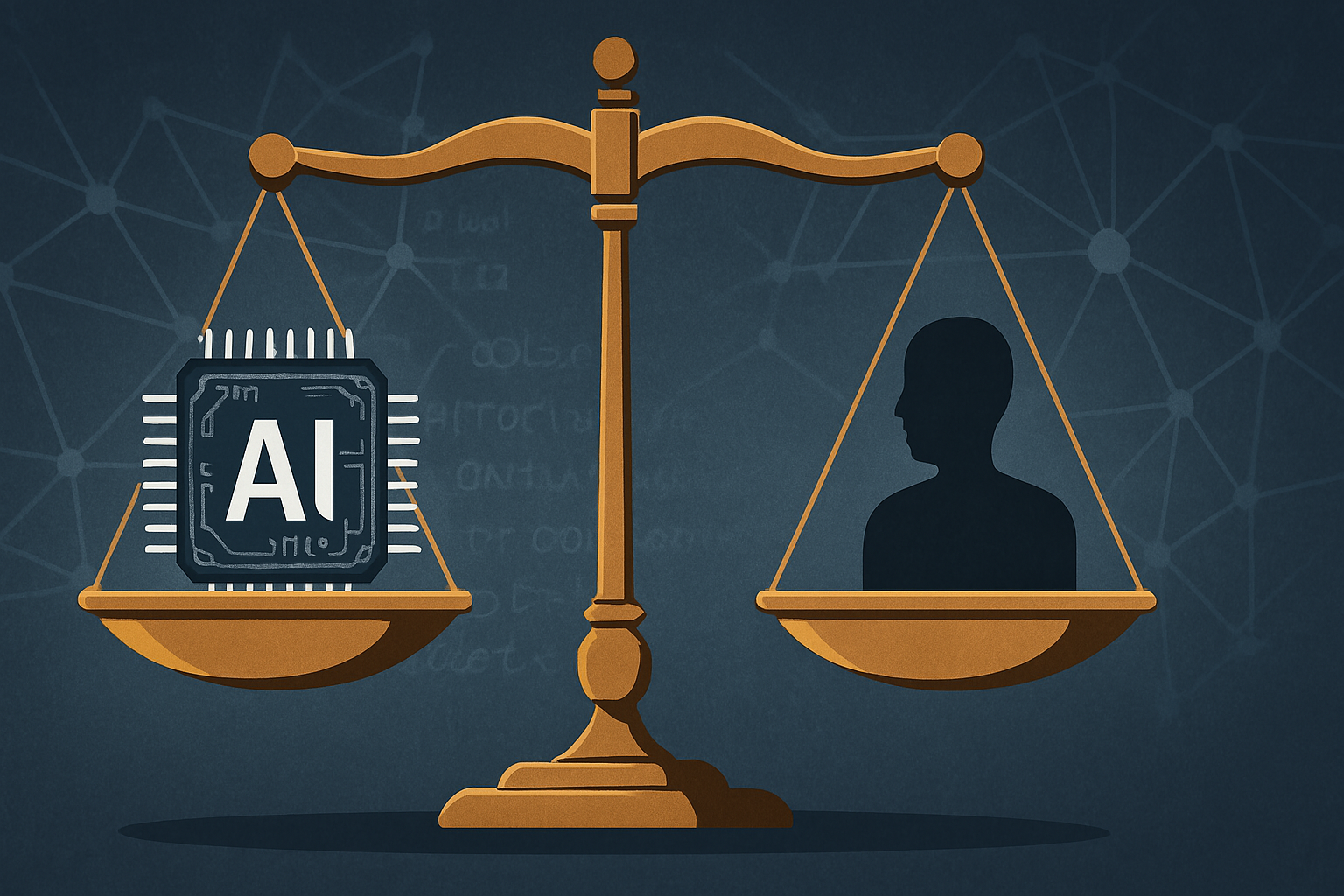Article 5: Ethical Considerations in Using AI Tools for Business
Meta Title: AI Ethics in Business (2025): Key Considerations & Best Practices
Meta Description: Explore the crucial ethical considerations when implementing AI tools in your business. Learn about bias, privacy, transparency, and responsible AI practices for 2025.
Target Keywords: AI ethics, responsible AI, AI in business ethics, ethical AI tools, AI bias
Navigating the Moral Maze: Key Ethical Considerations for AI in Business (2025)
Artificial intelligence (AI) is no longer a futuristic buzzword but a transformative force reshaping industries. Businesses are increasingly adopting AI tools to enhance efficiency, personalize customer experiences, and drive innovation. However, this rapid integration of AI also brings a host of complex ethical considerations to the forefront. As we move further into 2025, it is paramount for businesses to proactively address these challenges to ensure responsible and trustworthy AI deployment.

This article explores the critical ethical dimensions that businesses must consider when leveraging AI tools.
1. Bias and Fairness
- The Challenge: AI models are trained on data. If that data reflects existing societal biases (related to race, gender, age, or other characteristics), the AI can inadvertently perpetuate or even amplify these biases in its outputs and decisions. This can lead to discriminatory outcomes in areas like hiring, loan applications, or even content recommendations.
- Considerations for Business:
- Data Audits: Regularly audit training data for potential biases.
- Diverse Datasets: Strive to use diverse and representative datasets.
- Bias Detection & Mitigation Tools: Employ AI tools designed to detect and mitigate bias in models.
- Fairness Metrics: Define and monitor fairness metrics relevant to the AI application.
- Human Oversight: Ensure human review in critical decision-making processes where AI is used.
2. Transparency and Explainability (XAI)
- The Challenge: Many advanced AI models, particularly deep learning networks, operate as “black boxes.” It can be difficult to understand precisely how they arrive at a specific decision or prediction. This lack of transparency can erode trust and make it hard to identify errors or biases.
- Considerations for Business:
- Explainable AI (XAI) Techniques: Explore and implement XAI methods that provide insights into model behavior.
- Clear Communication: Be transparent with users and stakeholders about when and how AI is being used, and what its limitations are.
- Documentation: Maintain thorough documentation of AI models, data sources, and decision-making processes.
3. Privacy and Data Security
- The Challenge: AI tools often require access to vast amounts of data, including sensitive personal information. This raises significant privacy concerns regarding data collection, storage, usage, and the potential for breaches.
- Considerations for Business:
- Data Minimization: Collect only the data that is strictly necessary for the AI tool to function.
- Anonymization & Pseudonymization: Employ techniques to de-identify personal data where possible.
- Robust Security Measures: Implement strong data security protocols to protect against unauthorized access and breaches.
- Compliance with Regulations: Adhere to data privacy regulations like GDPR, CCPA, and other relevant local laws.
- User Consent: Obtain explicit consent for data collection and usage, clearly explaining how AI will be involved.
4. Accountability and Responsibility
- The Challenge: When an AI system makes an error or causes harm, determining accountability can be complex. Is it the developer, the deployer, the user, or the AI itself (if that were even possible)?
- Considerations for Business:
- Clear Lines of Responsibility: Establish clear internal policies defining who is responsible for the development, deployment, and oversight of AI systems.
- Impact Assessments: Conduct thorough AI impact assessments to identify potential risks and harms before deployment.
- Redress Mechanisms: Provide clear channels for users to report issues, appeal AI-driven decisions, and seek redress if harmed.
5. Impact on Employment and Workforce
- The Challenge: AI-driven automation has the potential to displace human workers in certain roles, leading to job losses and societal disruption. It also creates a need for new skills.
- Considerations for Business:
- Reskilling and Upskilling: Invest in training programs to help employees adapt to new roles and collaborate with AI tools.
- Focus on Augmentation: Emphasize using AI to augment human capabilities rather than simply replace workers.
- Ethical HR Practices: Consider the social impact of AI deployment on the workforce and implement changes thoughtfully and transparently.
6. Security and Misuse of AI
- The Challenge: AI tools themselves can be targets of malicious attacks (e.g., data poisoning, adversarial attacks). Furthermore, AI can be misused to create deepfakes, spread misinformation, or automate harmful activities.
- Considerations for Business:
- AI Security Best Practices: Implement security measures specifically designed for AI systems.
- Misuse Prevention: Develop policies and technical safeguards to prevent the misuse of AI tools developed or deployed by the business.
- Ethical Use Guidelines: Clearly define acceptable and unacceptable uses of AI within the organization.
Building a Framework for Responsible AI
To navigate these ethical challenges, businesses should consider developing a comprehensive Responsible AI framework. This might include:
- Ethical AI Principles: Defining a clear set of values and principles to guide AI development and deployment.
- Governance Structures: Establishing oversight committees or roles (e.g., AI Ethics Officer).
- Regular Audits and Reviews: Continuously monitoring AI systems for ethical risks and performance.
- Stakeholder Engagement: Involving employees, customers, and the wider community in discussions about AI ethics.
Conclusion
The power of AI tools offers immense benefits to businesses, but this power comes with significant ethical responsibilities. By proactively addressing issues of bias, transparency, privacy, accountability, and societal impact, companies can build trust, mitigate risks, and harness AI in a way that is not only innovative but also ethical and beneficial for all stakeholders. As AI continues to integrate into every facet of business in 2025 and beyond, a strong ethical compass will be indispensable.
Leave a Reply